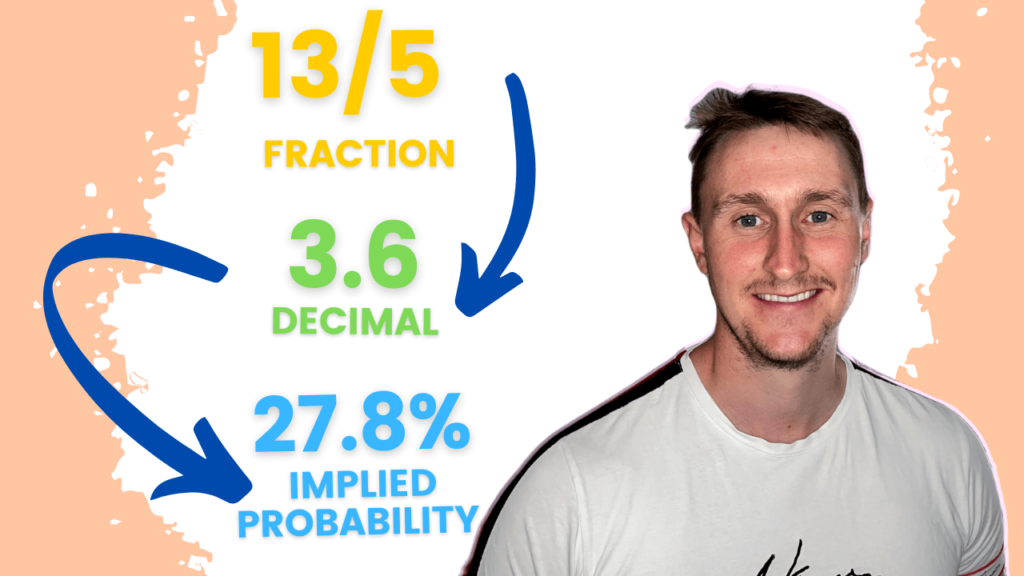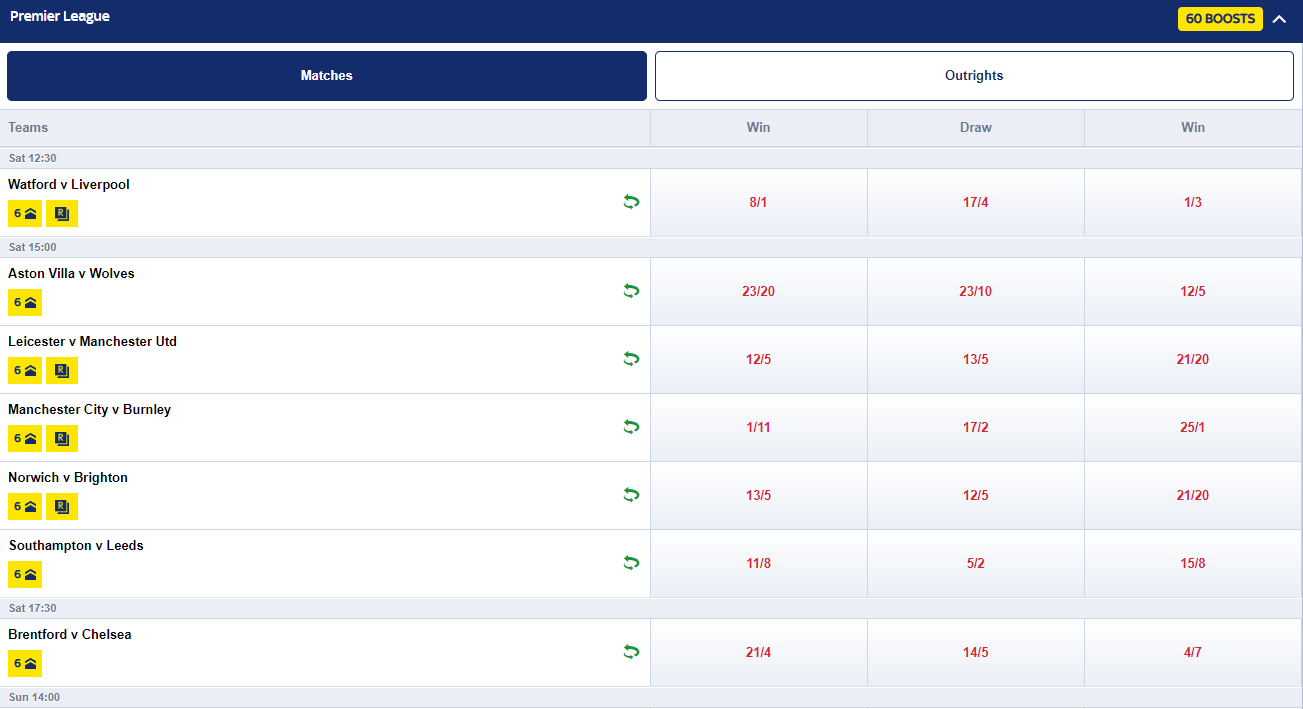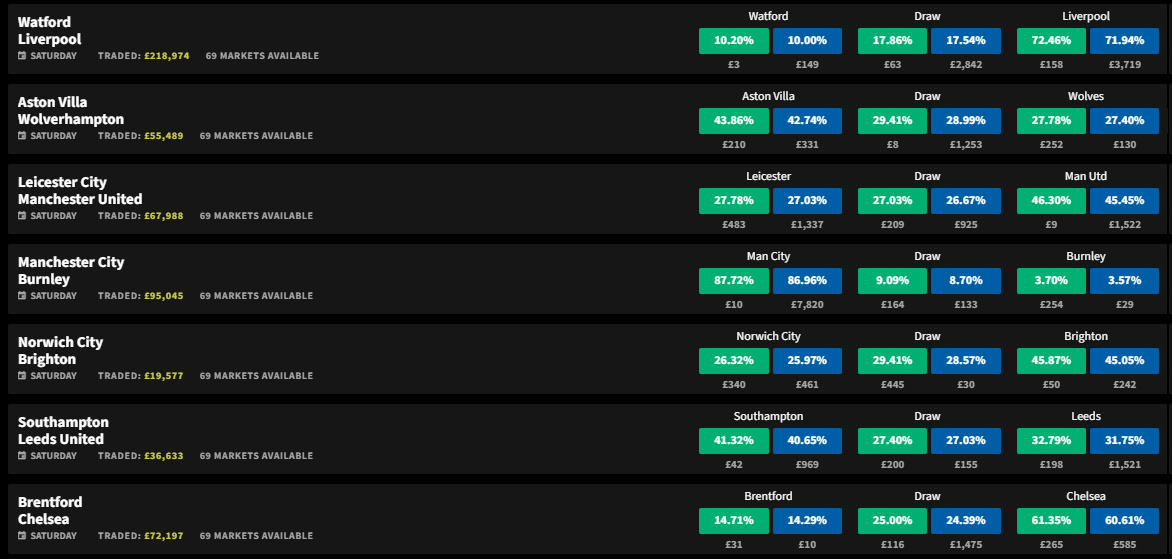This guide will cover exactly how betting odds work. After reading this quick and to the point guide you will have a solid understanding of how betting odds work, how they are calculated and how bookmakers manipulate them to cheat and stack the odds and probability in their favour.
Different Formats Of Betting Odds
There are two primary types of betting odds, both of which convert to implied probability or % chance.
Fractions:
Fractional odds are the oldest format of odds which are still commonly used with online bookmakers specifically in the UK.
Fractional odds essentially represent a ratio of risk to reward (amount returned for a winning bet VS. amount staked).
The first number in a fraction represents the return should your bet win, this is provided by whoever is taking the bet, in most cases this will be a bookmaker.
The second number that is used in fractional betting odds represent the stake that you are required to use to secure the profit from the bookmaker should your bet win.
If we take the fractional odd of 13/5, the bookmaker will return 13 pounds of profit to your balance for every 5 pounds that you bet, along with this profit from the bookmaker you will also have your stake returned on any winning bets.
Betting £5 at odds of 13/5 will result in a return of £18, £13 of which would be profit.
You are not limited to staking whatever the second number is in the fraction, for example, if you wanted to place a £10 bet at odds of 13/5 the bookmaker would then double their return from 13 to 26 as you have doubled down your stake on your side of the bet.
Example Of Fractional Odds
Decimals:
Decimal odds are a modern format of betting odds that continue to increase in popularity due to how intuitive they are.
Decimal odds range from 1.01 – 1000, the former represents a very small monetary return in relation to the risk that you use on your back stake as the event in question is almost a certainty to come to fruition.
The latter is simply the opposite and represents a very large monetary return in relation to the risk that you use on your back stake as this time the event in question is almost a certainty to fail to occur.
To work out the return from a winning bet using decimal odds, simply take the back stake you are using to place your bet and times it by the decimal odd.
For example, £5 x 3.6 = £18.
£13 Profit
£5 Stake Returned.
Example Of Decimal Odds
How To Convert Fractional Odds To Decimal Odds
To convert a fraction into a decimal you simply divide the two numbers in the fraction together and then add one, lets use the fraction 13/5.
5 goes into 13 2.6 times, if we add 1 to the total we get 3.6, this number is the conversion and the decimal odd.
There are lots of betting odds calculators that you can use to do all the hard work for you!
How To Work Out The Implied Probability Of Betting Odds
After converting a fraction into a decimal you can then work out the probability being offered with the odds in question.
Sticking with the theme, if we use the decimal odd 3.6 (which we converted from 13/5), to work out the implied probability or percentage chance of this odd we can simply take the number 1 and divide it by the decimal odd in question, after working out this total we then times it by 100 which will provide us with the percentage chance of the odds being offered.
In our example, 1 divided by 3.6 equals 0.27777, we then times this number by 100 which provides us with our implied probability which is 27.77%.
Example Of Odds In Implied Probability
How Do Bookmakers Stack Betting Odds In Their Favour
Bookmakers are always looking to stack betting odds in their favour, this isn’t just an old saying, this is the business model of all bookmakers whether that being on the high street or online.
The way in which they do this and the way they stay in business and bring in more money than they lose is by offering their customers shorter odds than what the true odds are on all the markets they have.
Let’s say the true odds of Everton winning a football match are 3.6 or 27.78% implied probability, the bookmaker in question would be likely to offer a customer a price of 3.0 or 33.33% implied probability.
This means that bookmakers try to sell their customers on an outcome being more probable than it actually is, or, in other words, they offer customers shorter odds than what the true odds are.





